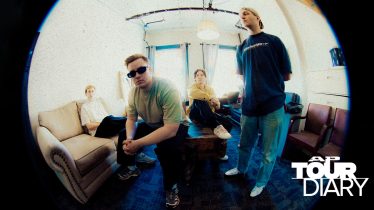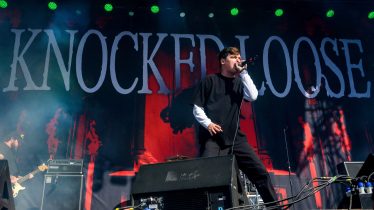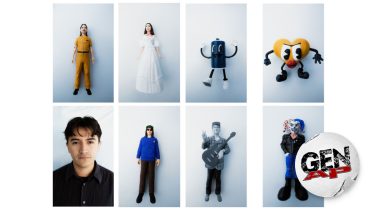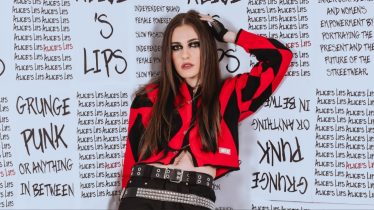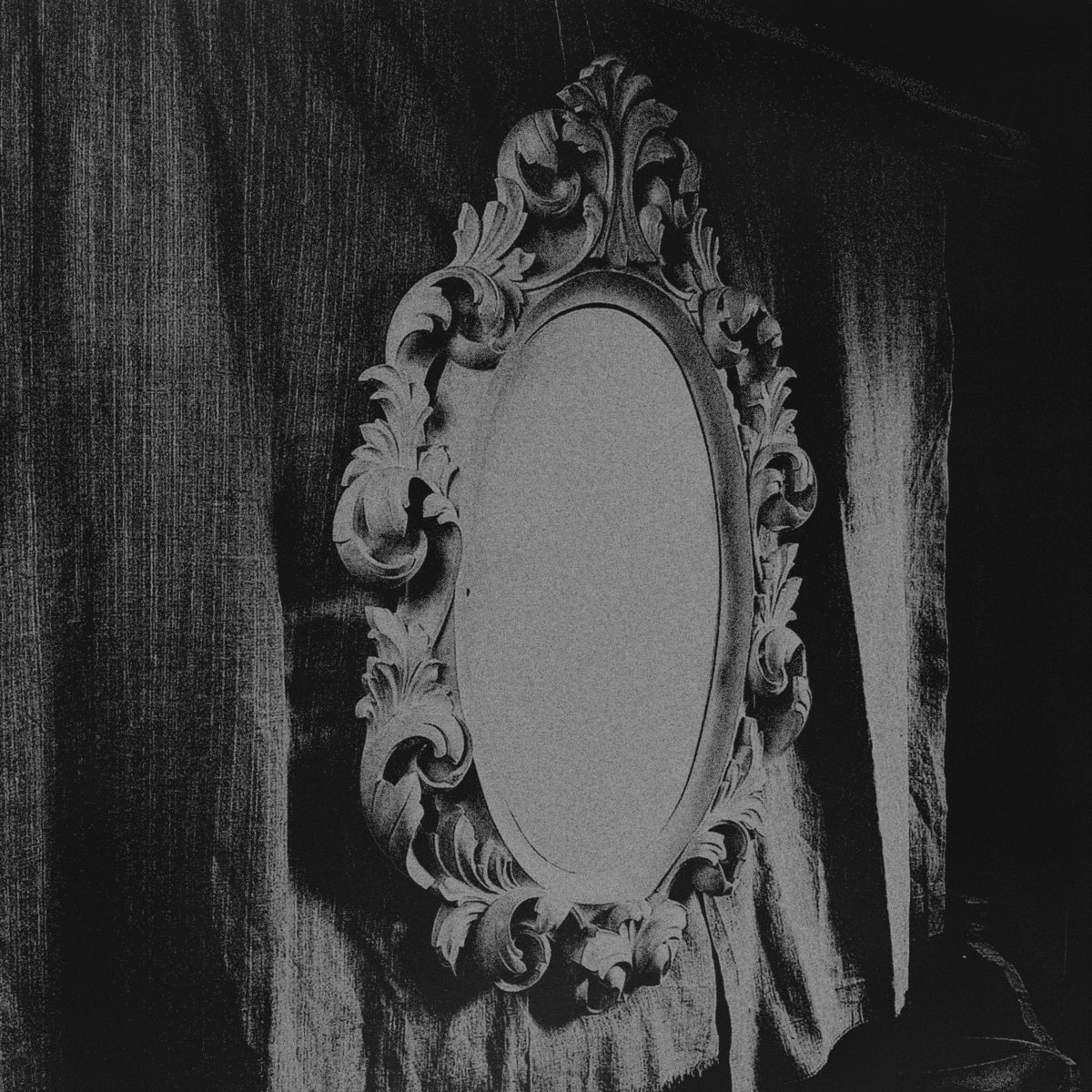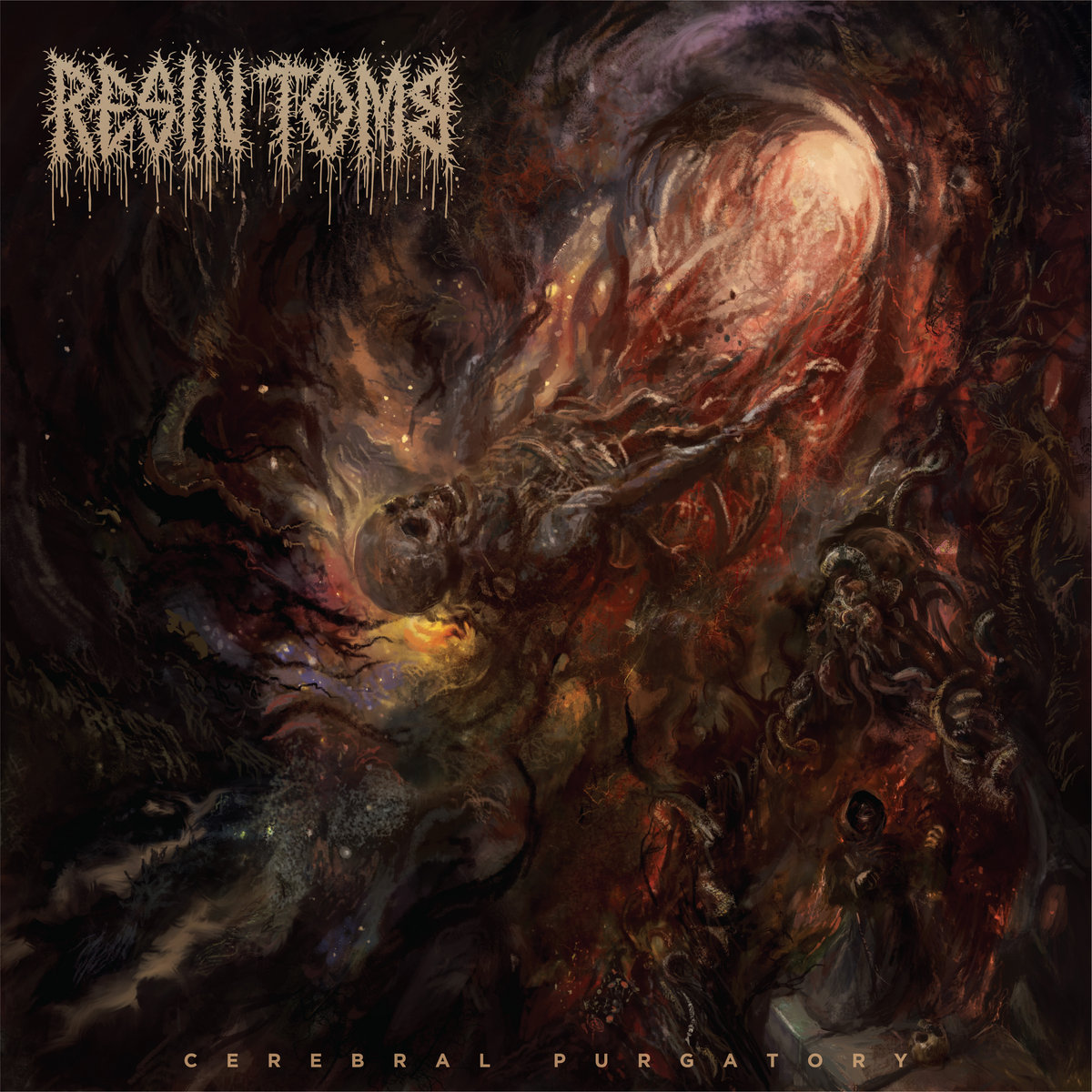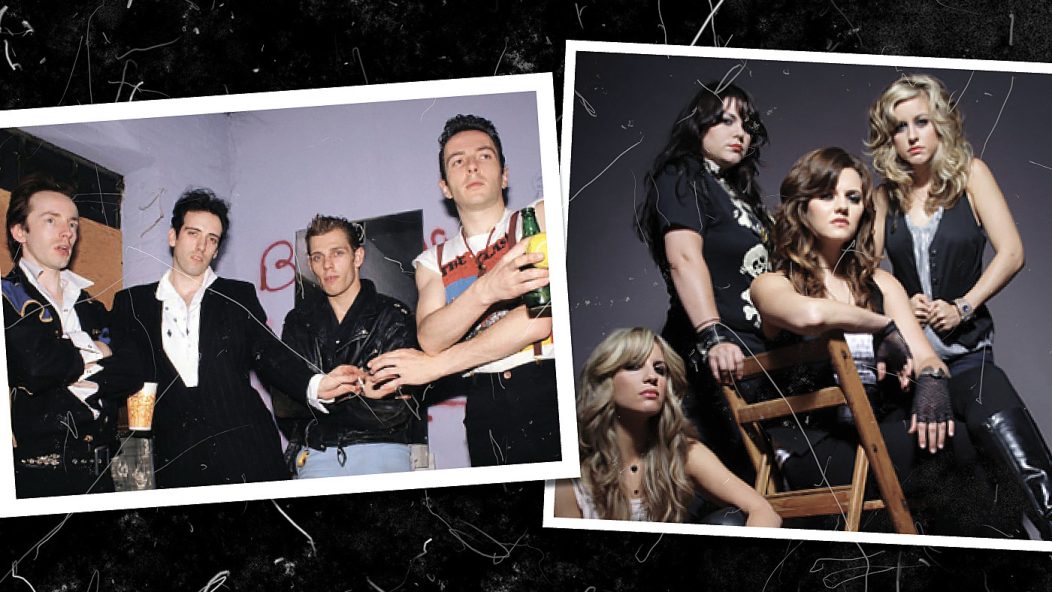
These 10 bands showcase the Ramones’ undying influence on music
Boston, Massachusetts, Sept. 25, 2021: The 1965 Mosrite Ventures II electric guitar played by Johnny Ramone on every Ramones album from 1977 onward and at 1,985 of their live shows sold at auction for $937,500. Not bad, considering the punk guitar architect paid $200 for it, after his original one he bought for $50 in the early ‘70s was stolen.
This might seem an insane price for a battered and bruised weapon wielded by a punk musician. But Johnny used that ax to clearcut a path through the overgrown forest that was the ‘70s for the entire world to travel.
Read more: 1995’s 15 best punk albums heralded a new age of mainstream rock
“We wanted to save rock ‘n’ roll,” he mused in his autobiography, Commando. “I thought the Ramones, the Sex Pistols and the Clash were all going to become the major groups, like the Beatles and the Rolling Stones, and it would be a better world.” Instead, the world looked at these freakish groups, most of whom were unthinkable without the Ramones’ initial example, and ran in the opposite direction. It would take Green Day’s later distillation of Johnny, Joey, Dee Dee and Tommy’s (and, later, Marky’s and CJ’s) innovations for the mainstream to finally accept them.
The Ramones had obvious predecessors—the Stooges, New York Dolls, ‘60s Brill Building pop, Mad magazine, grindhouse cinema and a McCulloch chainsaw. They refined these factors into minimalist drumming, two barre chord positions downstroked up and down a guitar neck (with no more than four chords per song), a similarly downstroked bass guitar holding down the root notes and plaintive singing atop. Dress it down in jeans, sneakers and a black leather jacket—a unified presentation that was easily emulated. It became punk’s formula to the point where, in a piece like this summarizing the Ramones’ influence, we could simply write “the length and breadth of punk rock” and be done with it.
But this doesn’t account for the non-punk musicians responding to the Ramones’ clarion call. U2 have declared numerous times that their early repertoire featured many Ramones numbers. Hardcore and speed metal are unthinkable without them. Then there’s a substrain of punk bands beginning in the ‘90s slavishly devoted to being the Ramones in their absence—Riverdales, Carbonas, Ramonas. But if Alternative Press had to pinpoint 10 bands who best exemplify the Ramones’ impact? We could do worse than those listed below.
Read more: Nirvana’s 1992 cover captures a band breaking into the mainstream
Sid Vicious
As John Lydon has famously snarled since the Sex Pistols were first noticed by the British rock press in 1976, England’s definitive punk band were not influenced by the Ramones. The Pistols began in 1974. No Ramones recordings existed for the Pistols to’ve heard when they gatecrashed their first gigs in late 1975. But one component of the Pistols’ second lineup was certainly a child of the Ramones: Sid Vicious adopted their leather jacket and torn jeans wardrobe early on. He learned to play bass by taking speed and playing along with the first Ramones album. Which was the primer for many a budding punk guitarist or bassist, due to a stereo mix that isolated Johnny’s Mosrite in one channel and Dee Dee’s Fender Precision in the other. You’d crank your hi-fi’s balance knob in the direction of the instrument you’re learning. Once you’ve mastered those parts, you could turn the balance knob in the opposite channel and play along with the Ramones.
The Clash
Contrary to popular belief, the Sex Pistols were not in the house when the Ramones made their London debut, opening for the Flamin’ Groovies at the Roundhouse July 4, 1976—America’s bicentennial. The Pistols were playing out of town, but the rest of London’s burgeoning punk scene attended, including members of the Clash and the Damned. As Generation X’s Tony James joked, seemingly every London band got faster and bought leather jackets the next day. Members of the Clash shyly approached the Ramones behind the venue before soundcheck, muttering that they’d started a band but didn’t think they were good enough to play out yet. “We’re lousy; we can’t play,” Johnny reportedly told Joe Strummer. “If you wait until you can play, you’ll be too old to get up there.” The Clash developed their own take on punk rock, incorporating elements of reggae and other music. But early classics such as “White Riot” had plenty of the Ramones’ speed and ramalama guitar action. And Strummer definitely hat-tipped the Ramones on their punky take on the reggae standard “Police & Thieves,” intoning “Blitzkrieg Bop”’s “They’re going through a tight wind” over its opening chords.
Read more: Oasis revisit a pivotal moment in music with ‘Oasis Knebworth 1996’
Misfits
Lodi, New Jersey’s horror-punk innovators the Misfits brewed in the shadow of Manhattan’s downtown rock ‘n’ roll renaissance. You couldn’t help but feel the rumblings from CBGB and Max’s Kansas City, even if you were what New Yorkers uncharitably deemed “bridge and tunnel.” Glenn Danzig’s songwriting drew as much from ‘50s rock ‘n’ roll and the bloodiest midnight creature features as anything. But the pulse of the Misfits was Johnny Ramone’s blurry right-hand grinding downward on his Mosrite’s six strings. Then there were those black leather jackets. It was as if the Ramones had written nothing other than “Chain Saw.”
Black Flag
Los Angeles’ early punk scene seemed more enamored of the English sound than anything, especially the high-speed trashiness of the Damned. But bands sprouted in the Ramones’ wake in Hollywood as everywhere else—Billy Zoom placed his Recycler ad searching out the rest of what became X after seeing a 1976 Ramones performance. Johnny/Joey/DeeDee/Tommy’s wider impact came with the hardcore generation that launched in L.A.’s surrounding beach towns. Black Flag’s debut EP, Nervous Breakdown, sounds especially Ramones damaged. “They were an extremely big influence on us!” original BF vocalist Keith Morris told AP. It’s obvious—Greg Ginn’s relentlessly downward rhythm guitar hand on this record almost rivals Johnny Ramone’s.
Read more: Patti Smith revisits her origins on ‘Live At Electric Lady’ Veeps stream
The Eastern Dark
1969 Detroit was the musical capital of ‘70s and ‘80s punk Australia. Following the initial example of the Saints and especially Radio Birdman, damned near every Australian punk band were either the Stooges or MC5, or both. The one other band who seemed to have the Antipodean punk consciousness was the Ramones, especially as the late ‘70s melted into the early ‘80s. Adelaide’s Exploding White Mice named themselves for a scene in the Ramones film Rock ‘N’ Roll High School. Sydney’s Celibate Rifles seemed especially keen on wedding Birdman’s MC5 riffing and expanded musical consciousness with the Ramones’ unrelenting drive. Early bassist James Darroch spun off in 1984 to switch to guitar and start his own group, the Eastern Dark. Every one of their shows opened with a Ramones cover, played in order of its release. Their debut single, “Johnny And Dee Dee” b/w “Julie Is A Junkie,” might as well have been called Hi, We Really Love The Ramones! The band ended March 4, 1986, when their tour van ran off the road, killing Darroch and hospitalizing the rhythm section.
Metallica
If hardcore reduces the Ramones’ loud/fast/short ethic to louder/faster/shorter, then speed metal’s loudest/fastest/shortest groupthink equally owe everything to them. Ask Metallica’s James Hetfield sometime. True, Los Angeles’ overly velocitous metallurgists have never been shy about their punk roots, especially their yen for Misfits, the heavier-than-heavy Killing Joke and British miscreants Anti-Nowhere League. But where do you think Hetfield learned to downstroke? Downpicking is the basis of his ferocious rhythm guitar attack. As he told Guitar World in the ‘90s, “It’s thicker, chunkier.” And there’s no more notable downstroker in all of rock ‘n’ roll than Johnny Ramone. The lineage stands to reason.
Read more: Revisit Green Day’s 2004 cover to celebrate 17 years of ‘American Idiot’
Green Day
Green Day, along with the commercial pop-punk wave they fueled when “Longview” hit in 1994, was the Ramones’ revenge. A handful of their singles—“Sheena Is A Punk Rocker,” “I Wanna Be Sedated”—bothered the lower reaches of Billboard’s Top 40 charts in the late ‘70s. But most radio programmers hated them. Now here was a band of 20-somethings, going mega with everything the Ramones created—ultra-distorted, high-speed, downstroke guitar chords, drums and bass dogging their heels, tuneful songs about mental illness and teenage drug misuse. It miffed Johnny and Joey Ramone, who thought their band would be the next Beatles. Johnny began planning the band’s retirement in earnest here.
The Donnas
In 1991, this writer reviewed records by three bands who owed everything to the Ramones—the Queers, the all-female Ramonas and Australia’s Ratcat. It was titled “Attack Of The Ramones Clones.” As the decade progressed, the Ramones increasingly became an entire punk subgenre, as the Queers gained popularity and three-fourths of Screeching Weasel spun off into the blatantly Ramonic Riverdales. Then Supercharger guitarist Darin Raffaelli found a teenage Palo Alto metal band called the Electrocutes and groomed them into a Ramones-esque act called the Donnas. They even assumed new Ramones-ish monikers—Donna A., Donna R., etc. When Raffaelli was pushed aside and they wrote their own songs, reinserting the metal tendencies, they became a major rock force of the ‘00s.
Read more: From 1973-1980, San Fransico was one of the great American punk cities
The White Stripes
Think about it: a band composed of completely unrelated people, claiming to be siblings. They present a unified front, dressing identically, and play a hard, streamlined, minimalist music that reduces rock ‘n’ roll to its base fundamentals. Are we talking about the Ramones in the ‘70s? Or the White Stripes in the ‘00s? The parallels are striking, even if Jack White’s vision was all about reinstating the blues influences Johnny Ramone insisted his band were trying to strip from their take on rock ‘n’ roll. Now give the White Stripes breakthrough hit “Fell In Love With A Girl” another listen and tell us Jack was not a Ramones disciple.
Masked Intruder
If you need to see the impact these four guys from Forest Hills, Queens continue to make on modern music, there’s worse evidence out there than Masked Intruder. Perfect pop songs set to savagely downstroked guitar? Check. There’s even a unified image, fictitious backstory, and matching pseudonyms: Intruder Yellow (bass, vocals), Intruder Green (rhythm guitar, vocals), Intruder Red (drums, vocals) and lead singer/lead guitarist Intruder Blue. They claim to’ve met and formed the band while in jail in their native Madison, Wisconsin. With Intruder Yellow reportedly in jail since 2019, Intruder Purple has acquitted himself nicely in the bass slot. M.I. hits like “Stick ‘Em Up” and “25 to Life” are so Ramonic, a leather jacket and bowl cut mysteriously sprout on your body when you listen to them.

